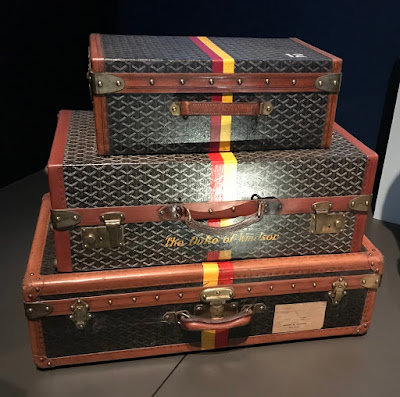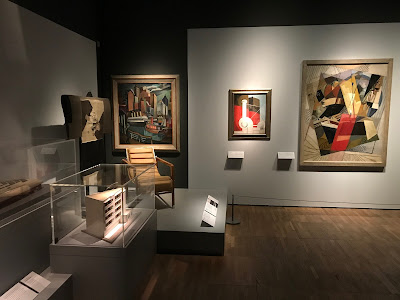 |
| The front and reverse sides of the ticket stub for admission to Ocean Liners: Speed and Style, 20 April 2018. |
 |
| An information card, menu card, and various 'Heartsease' pattern bone china dishes from the Orient Lines' SS Orcades (1948). |
 |
| A glazed earthenware 'cube' tea set designed by George Clews & Co. Ltd for the Cunard Line in 1936. The set includes a coffee pot, a teapot, a milk jug, a cream jug, and a sugar bowl. |
 |
| Eileen Gray's Fauteil Transatlantique (Transat chair), a Modernist armchair inspired by ocean liner deckchairs, known in French as 'transats'. Gray designed the chair for the balcony of her Modernist villa overlooking the French Riviera in the late 1920s. The chair's frame dates from 1925-30, while the upholstery is from the 1960s. |
 |
| A fragment of wooden panel from an overdoor in the first class lounge of the RMS Titanic, on loan from the Maritime Museum of the Atlantic, Halifax, Nova Scotia. It is decorated with carvings of musical instruments in the Rococo style, indicative of the high-quality decoration aboard the ship. This piece is the largest remaining fragment of the Titanic, which broke in half and sank on the night of 14 April 1912. This exhibition marked the first time the piece had been seen in Europe since Titanic departed on her fateful maiden voyage. |





































No comments:
Post a Comment